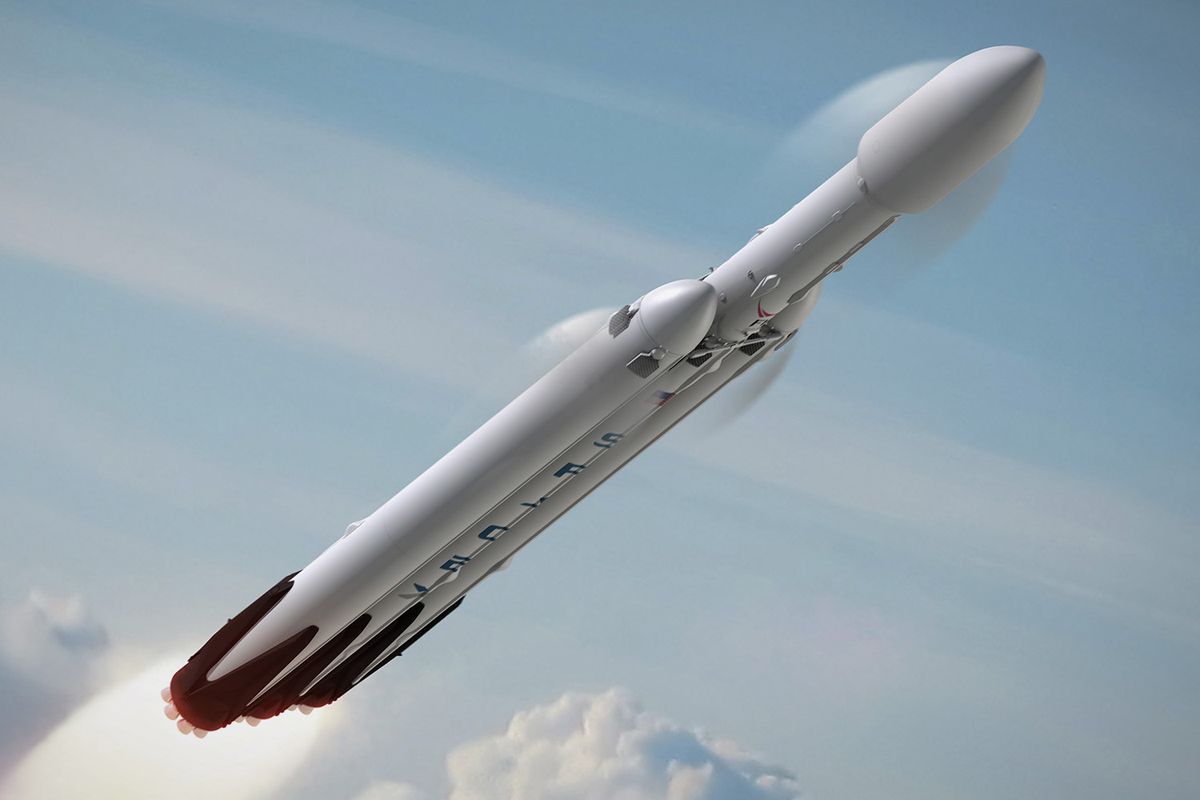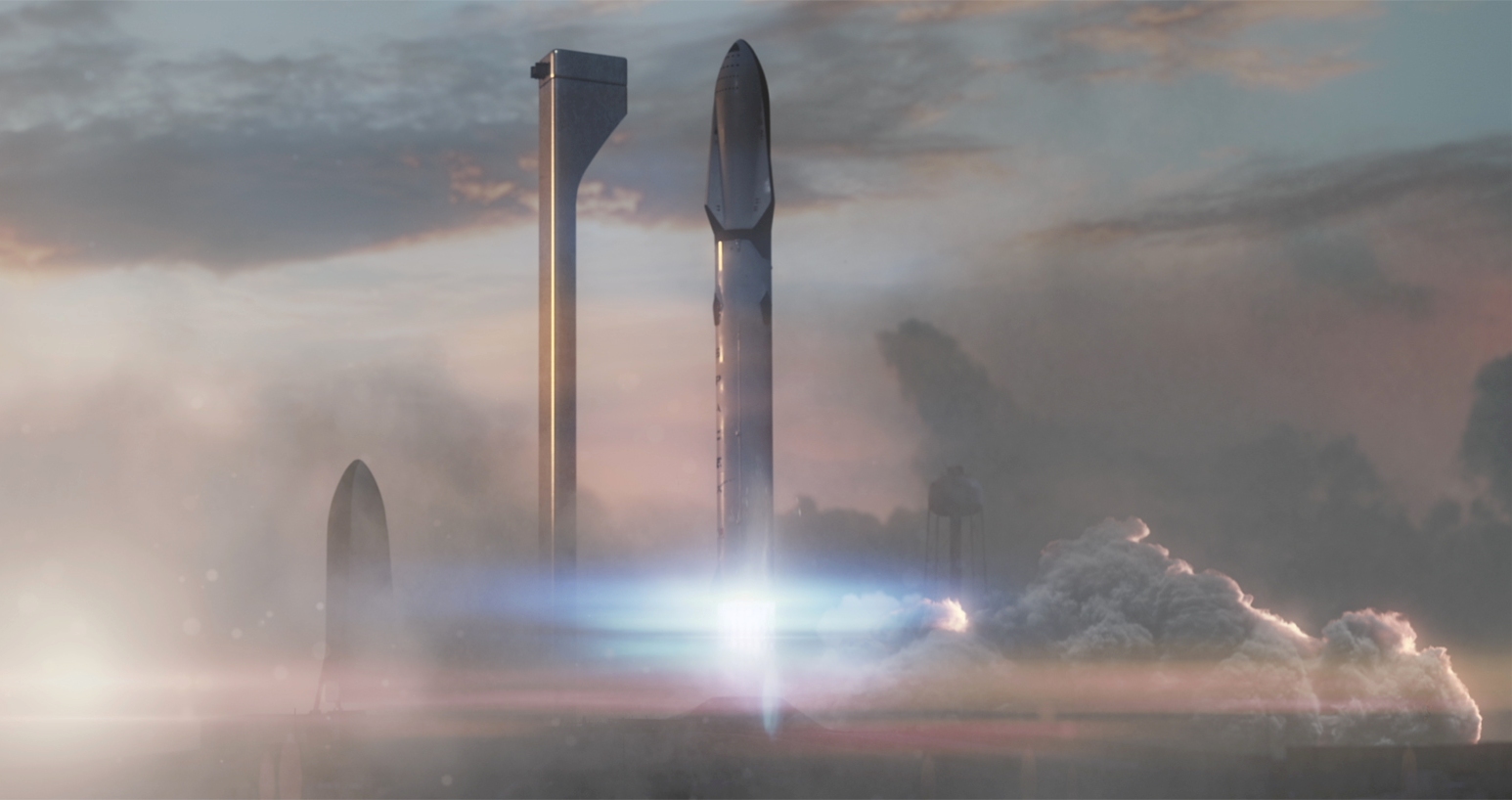The first launch of the Falcon Heavy rocket, developed by SpaceX, will take place in January 2018 at Cape Canaveral. This was
announced by Ilon Musk in his Twitter.
The SpaceX CEO added the heat to the announcement,
responding to the follower that he plans to send “the silliest cargo you can imagine” to Mars. Transferring attention to the details, Musk announced that his personal electric Tesla Roadster will fly to Mars with the song of David Bowie "Space Oddity". If it does not blow up at the start, Ilon made a reservation.
Later, Musk, in letters,
confirmed his intention to launch an electric car, then
told reporters that the payload would be really useful, not a clown.

Initially, Falcon Heavy was supposed to fly into space in 2013. This July, Musk was not sure about the successful launch of his brainchild. After the crash of the Falcon 9 launch vehicle in June 2015, the priority of work on the first launch of the Falcon Heavy was reduced in favor of the return launch of the Falcon 9 rocket. First, the start was postponed to spring 2016, and later to the end of 2016. Then it turned out that for Falcon Heavy you need to significantly change the launch pad.
Such a PR Mask is not new. During the first launch of the Dragon spacecraft in 2010, Musk allegedly hid the giant raw head on board. This joke is a great example of how Musk can beautifully work out his fakapy. As recently as July, he
promised to send Falcon Heavy into orbit in November, and already December and now the launch date is January.
Following the launch of the "electric car" - in the same year 2018 - a flight of space tourists to the moon will take place with a new manned module Dragon 2.
The January launch is a routine test only for a rocket. Its payload is still unknown. Since the estimated launch date of the new Dragon 2 is April 2018, it will not be tested.
Of course, Falcon Heavy is able to bring almost 17 tons to Mars, and the Tesla Roadster weighs a little more than a ton. Ilona’s reservation that an “electric car” or something instead of it will fly in space for billions of years can say that there will be no returning ship at all.
The era is approaching when private companies will be able to launch Mars to Mars. This raises interesting questions about, for example, the preservation of the ecosystem of the red planet. Now its ground is explored by mars rovers, by 2020 another launch is underway. Even for satellites for orbits and flyby of Mars, NASA imposes category III
sterility requirements in order not to carry earthly life onto an uncharted planet. It is unlikely that a billionaire's personal electric car can be cleared of traces of biological activity to such an extent that it would be unclear if they were to do this if the joking intentions were true.
Also, space junk is a threat to the orbit of any potential body. The introduction of the object of low scientific and practical significance to the permanent orbit of Mars is unacceptable.
Very simply, Falcon Heavy can be represented as Falcon 9 and two overclocking modules, similar to the first stage of this rocket. The concept states that both the two accelerators and the central unit can be returned for reuse. Each has 9 Merlin 1D liquid-propellant rocket engines installed according to the
Octaweb scheme with one central engine and the other eight located around it in a circle. In total, when starting up 27 Merlin 1D 1D engines, a thrust of 22,819 kN at sea level and 24,681 kN in a vacuum is created.
The first side accelerator for the Falcon Heavy debut launch is the restored and modified first stage B1023, which
returned to the floating platform after the launch of the Thaicom 8 satellite in May 2016. The second side accelerator for the first launch will be the B1025 stage, which
returned to the landing site after the SpaceX CRS-9 launch in July 2016. In principle, for the Falcon Heavy project, it is also envisaged to return all the first-stage overclocking modules, but it will not be confirmed with this first launch until it is confirmed.

Earlier this fall, at the International Astronautical Congress, Ilon Musk
announced that all of SpaceX's current launches are part of a future global interplanetary launch vehicle, known as
BFR . Ulon Ilon plans to create an autonomous colony on Mars.